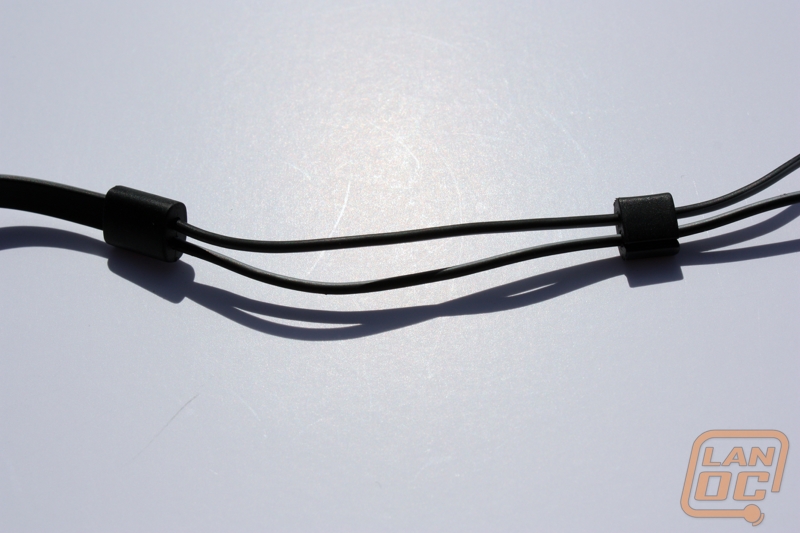Audio Quality and Comfort
In order to accurately review and asses the earbuds we need to have something to compare it against. Since I do not have a pair of earbuds that will even come close to the Flux In Ear Pro headphones, I will compare the comfort of the Flux headphones to the comfort of the Gigabyte headphones I previously reviewed. The audio quality will be compared to that of the Asus Orion Pro. This is the best solution that I could come up with to give an accurate idea of both the comfort and audio quality. I tested the earbuds with multiple songs, shows, movies and games to get a good idea of how they performed in different situations. Considering the size difference between the drivers in the Flux In Ear Pro's and the Orion Pro, they are in for an uphill battle, but this is a fairly good representation of the uphill battle SteelSeries is going to have convincing people that they should trade in their big expensive headset for earbuds.
Before we get into actual testing I want to touch on a couple of things. The first is why Steelseries would decide to make a professional level pair of earbuds at all. The answer is simple, gamers. Professional gamers are using earbuds more frequently according to Steelseries. When I think on it, it makes a bit of sense. Every time you watch a professional gaming event you can see it. The players wear in ear earphones for the audio for all of their games, and then put sound dampening earmuffs on top of them to help negate some of the noise from the crowds, announcers, and general chaos of the event. Steelseries wanted to get in on an emerging market on the ground floor and thus started producing the Flux series of In Ear headphones.
The other bit I want to cover is the balanced armature technology that the Flux In Ear Pro's uses. There are two types of drivers typically used when it comes to any type of headset or earphones, and they are balanced and dynamic. The dynamic drivers are cheaper to make and used in most headphones. The balanced armatures give off a more even and clear sound than the dynamic, but they lack the ability to produce robust bass. The balanced armatures have a much faster response time than the dynamic and thus are better for most situations, but cost more to produce. Steelseries selected the balanced armatures because they are much better for gaming with their faster response time, less distorted audio, and more balanced levels (aka less bass). I am sure dynamic drivers would have done just fine, but that wouldn’t have separated this earbuds from all the others (and we will see what SteelSeries can do with dynamic soon enough when we cover the non-pro version of the Flux In Ear next week).
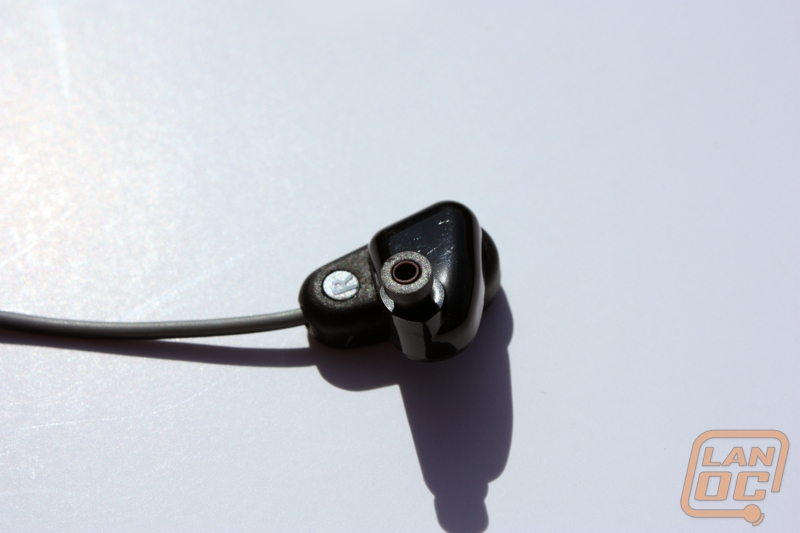
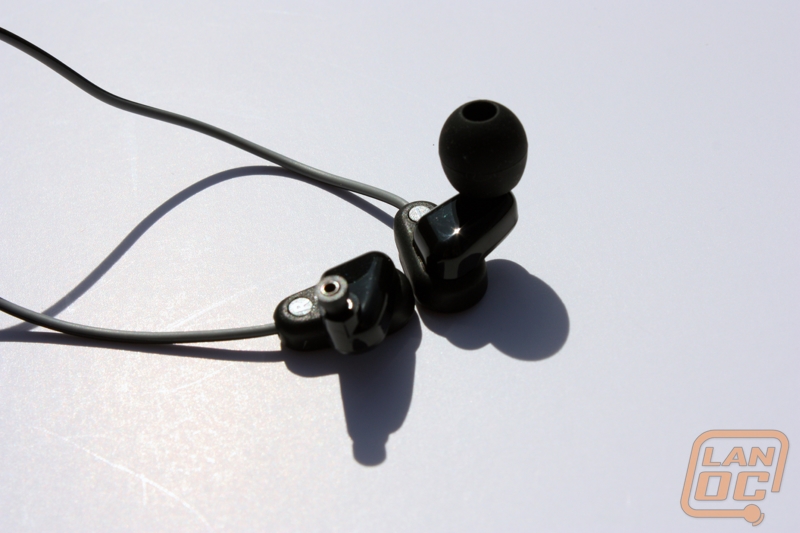
Bone Thugs N’ Harmony – The Crossroads – Right away it becomes clear that the Flux In Ear Pro are lacking any significant amount of bass. The soft is soft and mellow with a nice bass line and instruments throughout. The headphones do a great job if producing the mids and high clearly through the entire song. I was quite impressed to hear what sounds like a tambourine in fact, because in previous testing it went unheard. It is worth it to mention that the headphones do still play the lows, and it still sounds okay, but it lacks that “feel” or “thump” that most people associate with bass. In comparison to the Asus headset that I reviewed this song certainly wasn’t as good, but in my eyes that is 99% to do with the lack of bass that the balanced armatures can produce because the rest of the song was pretty clear.
Nat King Cole & Natalie – Unforgettable – Another light recording, with mostly only mids and highs, but still with a dash of lows. I enjoyed this song more with the Flux In Ear pros than I have with any other audio device I have tested. The balance is just amazing, the mixture of mids and highs works so very well with the balanced armatures. Everything is even and one sound doesn’t overpower another. The instruments all produced a clear and great sound. In comparison to the Asus Orion Pro, these earbuds were WAY better with this particular song. It’s funny because listening to this song in the past was a bit of a chore and I wasn’t really a fan, but these earbuds changed my mind completely.
Eric Clapton – Rush (Soundtrack) – 10 – Tears In Heaven – Once again the lack of bass is immediately noticeable, but this time around it isn’t detrimental to the song as a whole. This song has mostly highs and a decent amount of mids, which the earbuds produced clearly. Yet again they made me appreciate a part of the song (this time a maraca in the background) that I have previously overlooked. Once again I have to give the edge to the Flux In Ear Pro headset, it simply put out an overall more balanced and pleasing audio.
Ludwig van Beethoven - Für Elise – This song has a good bit of mids and lows, but no real amount of bass to speak of, which makes it somewhat surprising that I felt that the In Ear Pros came up a bit short. Overall, maybe because of the additional balance that the armatures provide, I felt the song was just too flat. I just didn’t enjoy this song as much as I have in the past, and that it lost a bunch of its character. With this song I have to give the edge to the Asus headset.
Television – Doctor Who - Doctor Who, in case you haven’t heard of it is about a space traveling alien with two hearts, if that doesn’t interest you then I don’t know what will. It’s a television show so there is obviously a good bit of dialogue, music, and in this particular show’s case, action. The quality of everything with the In Ear Pros was excellent. Even the explosions, which have a good amount of bass were pretty good because it isn’t the type of bass that is meant to thump, but rather just make noise. As far as television and movie viewing, I give the edge to the Flux earbuds, they were more balanced overall and lead to a more enjoyable show.
Game – League of Legends/Dead Space 2 – The audio quality in both games was excellent. League of Legends doesn’t have too much going on in the ways of audio, but where there was sound it was clear and balanced. The directional sound came through once again in that action that took place to my left was only heard in the left earbud and same for action that took place on the right. Dead Space once again didn’t disappoint, in fact, the eerie sounds that I heard throughout the game were made more eerie by something that I will touch on in the comfort section. The only complaint that I have at all in fact when it came to gaming is that when stuff exploded it hurt my ears a bit. This is undoubtedly because I play with my volume high and having the sound coming out IN your ears rather than around them makes it sound a bit louder.
Microphone – Typically when I think of earbud style headphones I don’t imagine a microphone. The Flux In Ear Pro does come with a microphone included though. The microphone is build right into the left earbud wire. I used the microphone for Skype, Ventrilo, and in multiple games. I was told by a couple of friends that they couldn’t tell the different between the mic on the earbuds and the mic on the headset I was previously using. The microphone also has some built in controls to use with your different mobile devices. You can use the controls to answer, mute, or hang up calls on your phone, but the button doesn’t do anything when using the adapter that is built for the PC.
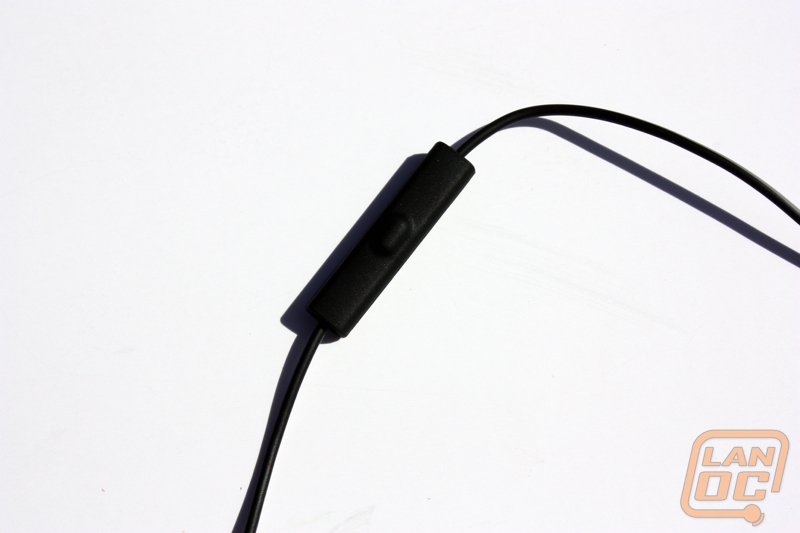
Now that we are done looking at the audio quality of the earphones, let’s take a look at the comfort and features that they provide. The first thing I want to mention is the comfort as far as how they sit in your ears. They come with three different sizes of earplugs, a small, medium and large. Of these sizes I found the medium set to be most comfortable for me, but that likely differs from person to person. I didn’t even use any of the base earplugs anyway; I chose to use the Comply Foam Tips. These tips were included for no extra cost by Steelseries. The Comply Tips are soft memory foam like material that can be compressed down, inserted into the ear, and then expand to hold the earbuds in place and seal in the sound for a better sound. One thing that I should mention is that on the first few times of putting in the earbuds, because of the unique shape and design they were a bit awkward to put in. Once I had it figured out however, especially with the Comply tips, it was a breeze.

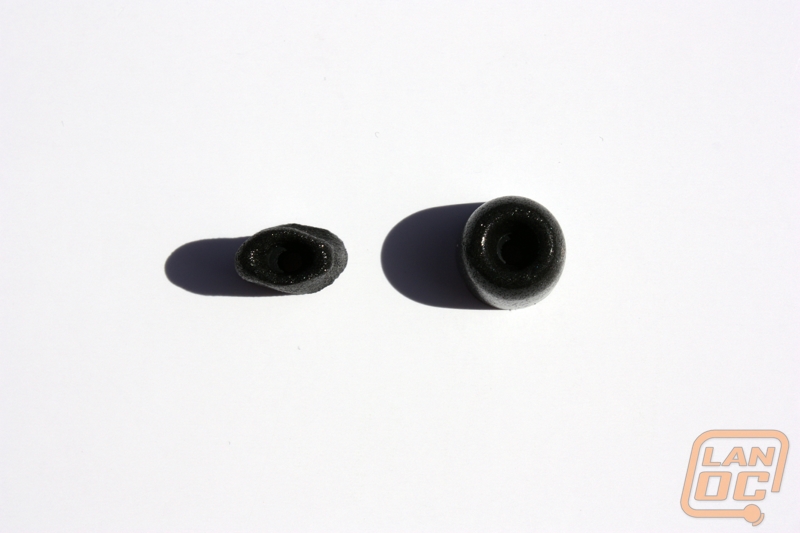
The other thing that is included for comfort is the over the ear attachments. These are two hook like, soft rubber pieces that hook onto the headphone wires to adapt the regular in ear style into more of an over the ear style. The attachments were actually too small for my ears and I am not a big fan of over the ear style headphones myself anyway, but it is nice to have the ability to switch to that style if it’s what you’re into.
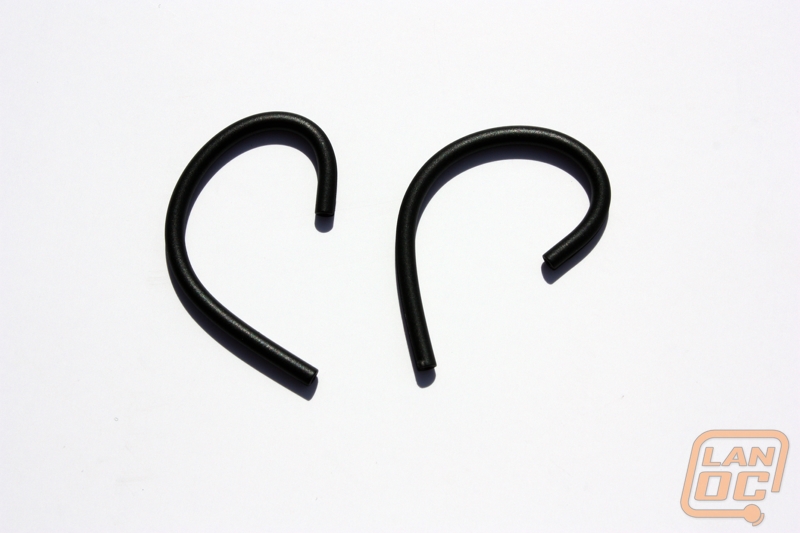
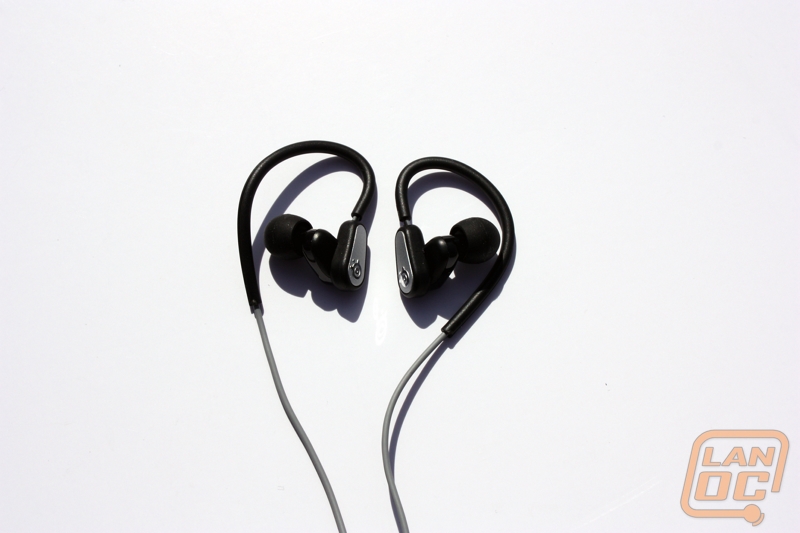
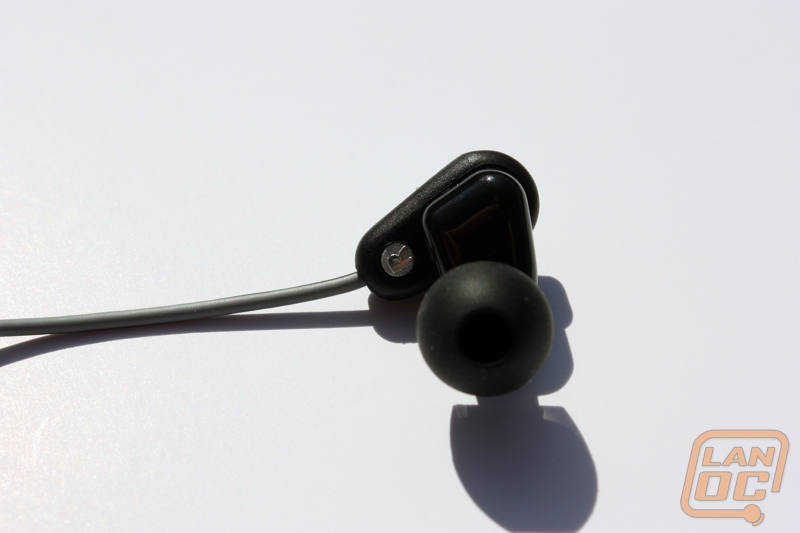
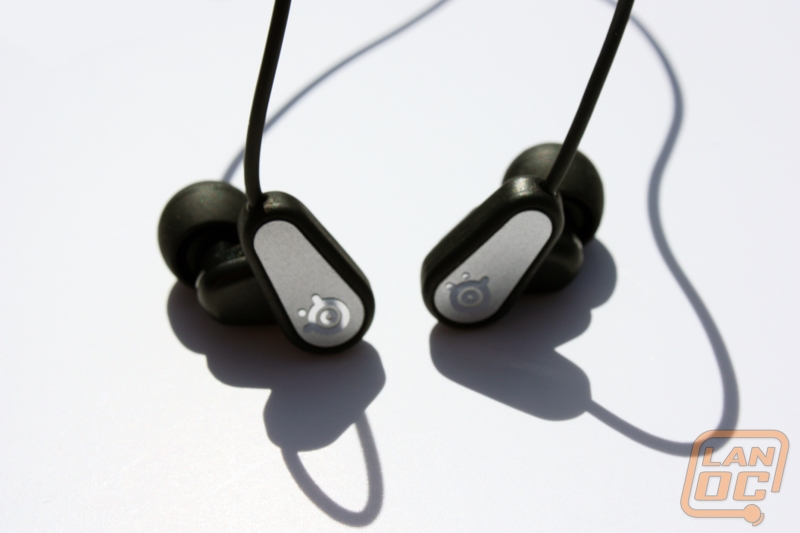
There are a few more things I want to mention that are not directly related to comfort, but still deserve to be talked about. The first is the cable itself. Most of the wire for the Flux In Ear pro is thick and flat. This is the first time that I have seen this particular design used for wires. It helps the cable to keep from getting tangled up. Quite a few times I just grabbed the headphones on the run and shoved them into my pocket, and each time I was able to get them untangled within seconds of removing them from my pocket.
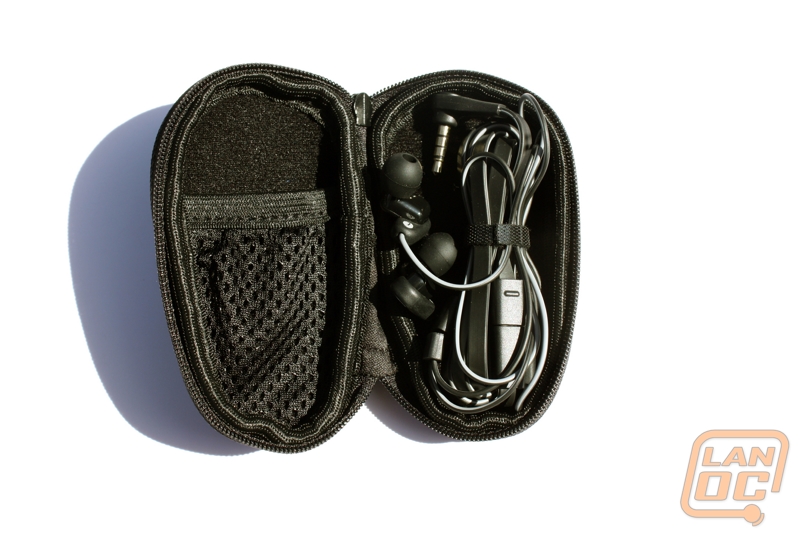
The next feature is the breakaway cable. At the bottom of the headphones, near the audio jack there is a small breakaway. This allows for the cable to come unplugged easily if you accidentally stand up too quickly without removing the earbuds. This design also allows for the interchangeable end pieces and for the ability of the headphones to be cross platform. One end piece allows for an audio and microphone jack, the type you might see on computers, and the other just allows for a single plug which transmits both, the type you might see on a phone or handheld game system. The wire itself is a bit short for my taste and users without a front audio port on their computer, but they do make audio extenders and there other ways to circumvent the wire length, but it is a minor inconvenience. It is important to note that the cable length is standard for other in ear headphones in the same price range, but being as how these particular earbuds were aimed at gamers, I would have hoped to see a longer cable, or at least an extension that you sometimes see with other gaming earbuds.
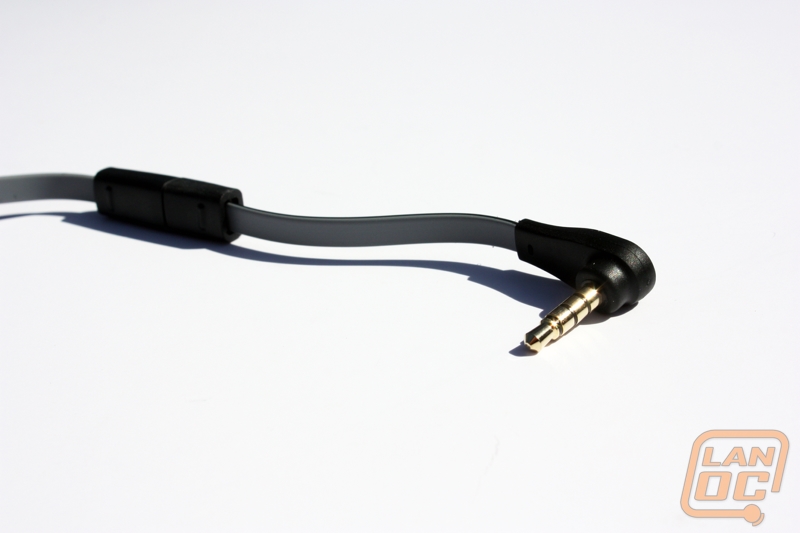
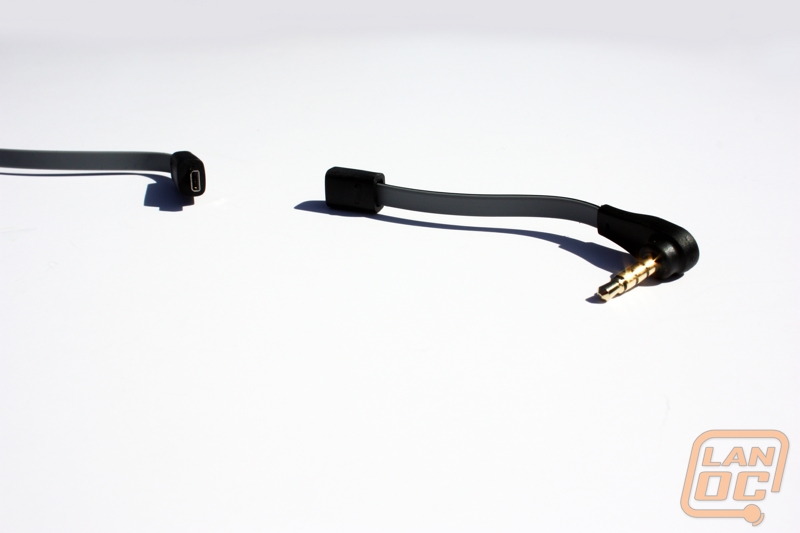
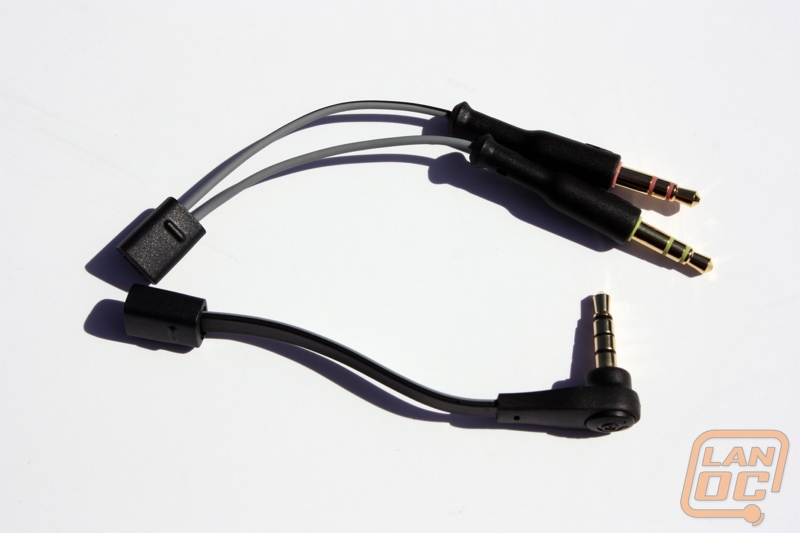
The last feature I want to touch on is the cable slider. This simple piece of plastic can be moved up and down the area in which the cable is split into two to allow for more or less slack between the two earbuds. I typically just left this all the way down as I like to have more slack between the earbuds as I have a really big head, but again, it’s always nice to have the option to change things up.
